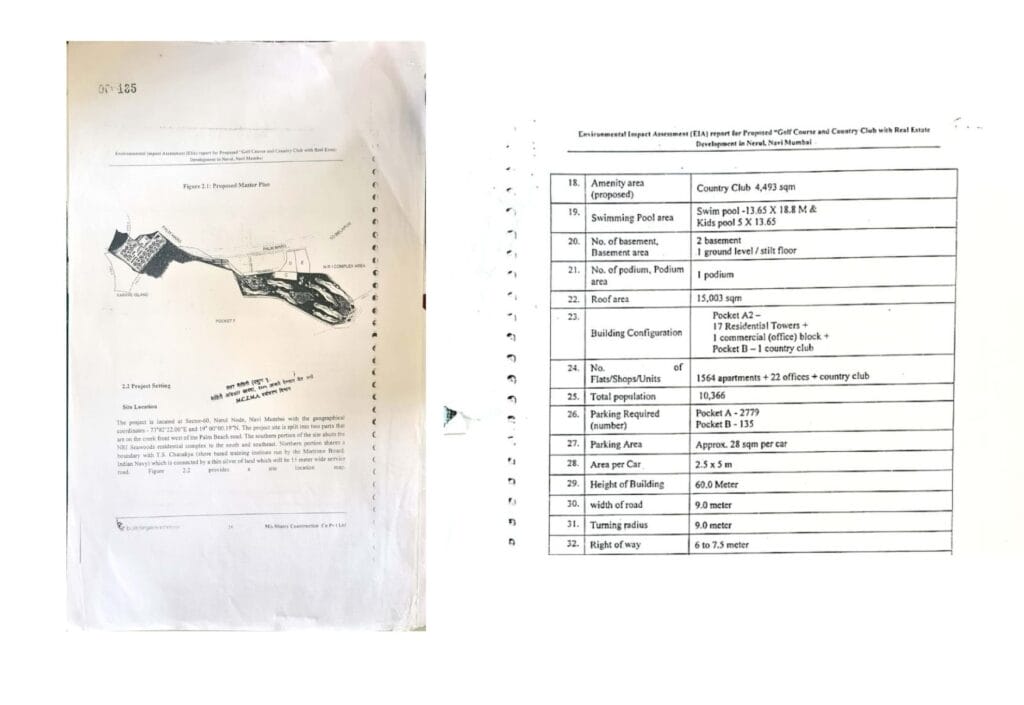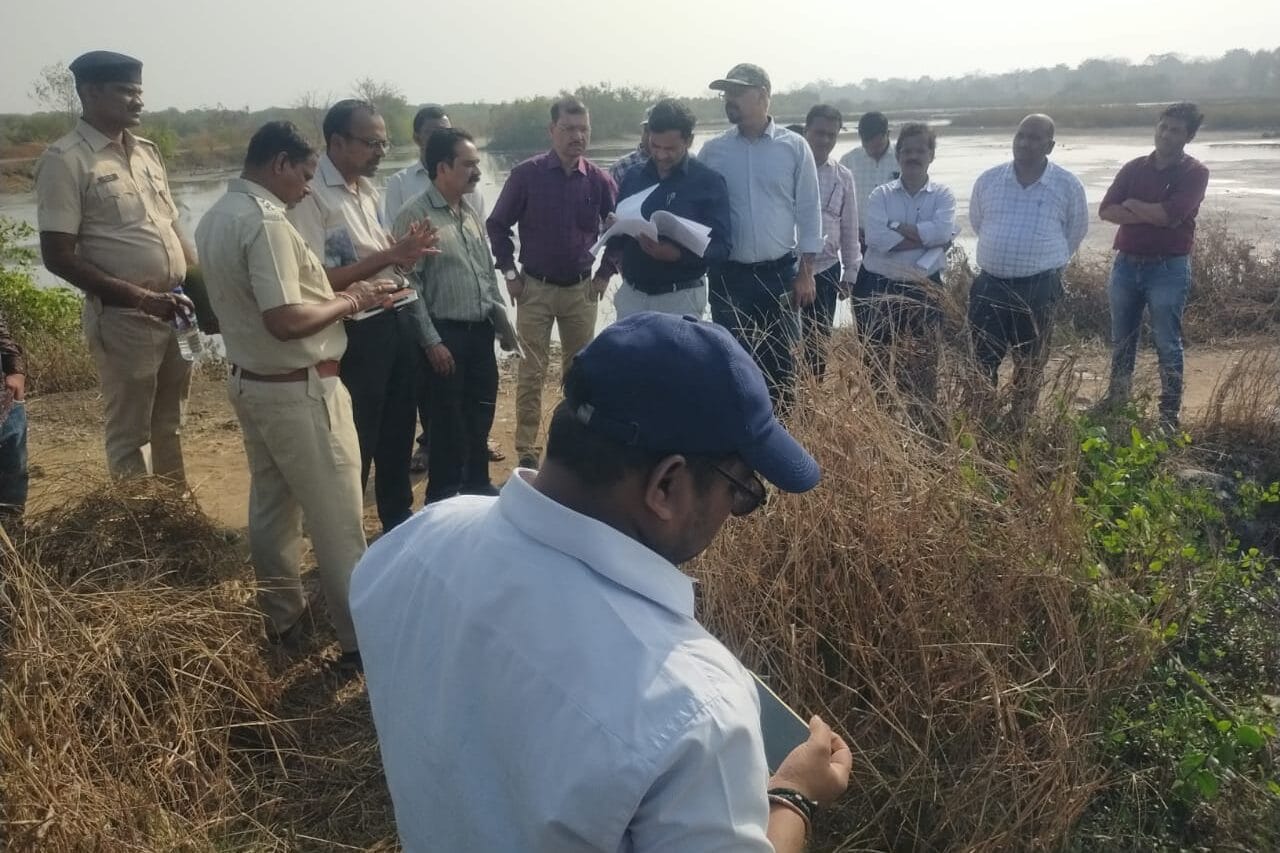On the morning of December 13th last year, Seema Tania, a bird watcher spotted a few dead mangrove trees near Navi Mumbai’s Chanakya lake. These fully grown mangrove trees are usually seen in abundance on bunds created within the lake forming a forest along a small strip of land that divides TS Chanakya’s grassy wetland. The strip is popular among birders, who often hide between the trees– hoping to spot the usual migratory birds that settle on the water all through the year.
Initially, Seema thought that only a few trees were being cut down. The next morning however, she went back only to find out that a two kilometre stretch of mangroves had been completely razed overnight, leaving only one tree behind. Local fishermen reported that a few people were seen in and around the site, taking photos of sawed trees– perhaps sending proof to their employers that the job was done.
She immediately put up a few pictures on a WhatsApp group of bird watchers. Soon enough, the news travelled from group to group, catching the attention of local environmentalists, students, and residents in Navi Mumbai. Many pointed out that the mangroves were legally protected from being cut down as a result of court orders, environmental committees and legal mandates over the years.
After the mangroves were discovered, a group of citizens filed a complaint with the State’s Mangroves Cell and Mangroves Conservation Committee. After an initial review of the incident, both committees passed the responsibility for the destruction of mangroves from one government agency to another. In fact, no FIR has been filed to this day. Part of the reason seems to be a general confusion among authorities regarding ownership of the land and a lack of knowledge about which government authority is responsible for protection of the lake.
The delays prompted a protest march led by citizens, on December 24th, 2023 – the first of many, conducted every Sunday, under the banner ‘Chalo Chanakya’.
Plenty of legal safeguards protecting mangroves, but a problem of implementation
Currently, mangroves receive quite a high level of protection in Maharashtra, at least on paper. For example, In September 2018, The Bombay High Court had necessitated that all mangrove forests be transferred from government agencies to the state’s Mangrove Cell, a legal authority unique to Maharashtra, which was created to protect and supervise mangrove forests in the state. The court later formed a State Mangroves Protection and Conservation Committee as well. Their job was to maintain proper coordination among all government agencies in the protection of mangroves.
Read more: Coastal management authority in Navi Mumbai passes golf course but rejects school proposal
In addition to this, a State Wetlands Protection & Conservation Committee composed of representatives from Navi Mumbai’s local government, CIDCO, which is the land use and urban development authority in Navi Mumbai, the Maharashtra Pollution Control Board among others, was also instituted by another High Court order in 2016. This committee was to monitor the implementation of the orders passed by the High Court from time to time and to act upon the complaints received from the public regarding the destruction of wetlands .
Chanakya Lake also falls in a wetland area, mentioned in the National Wetlands Atlas Inventory, and is also specifically protected by orders of Bombay High Court in 2013 as well as Supreme Court order of 2017.

When citizens approached the Mangrove cell to have the destruction of mangroves at Chanakya lake inspected, it appeared that the cell had not been handed over these mangrove forests and so, it wouldn’t be able to file an FIR for destruction. As a result, residents themselves had to investigate the details of the wetland area’s extent and ownership through RTI’s and open source material.
On inspecting the National Wetland Inventory, it was found that around 14.74 hectares of the wetland including the lake and its surrounding mangrove zones are still under the ownership of CIDCO, despite the 2018 court order.
Disturbingly, in the days leading up to the razing, security personnel from a private builder had even begun patrolling the forested area, informing locals and fishermen that the lake had been sold to them for the construction of a hotel and residential towers.
After a closer look at the development plans around Chanakya and the adjoining NRI lake, it appeared that CIDCO had denied the existence of the wetlands in the area, instead labelling these areas as ‘developable land’ in 2017. Simultaneously, CIDCO had been expressing interest in handing over the wetland area, to a private builder to construct a golf course in the NRI wetland, and a 17 building apartment complex over Chanakya Lake.
In an Environmental Impact Assessment (EIA) report for the golf course and apartment project, released in 2016– a set of building plans are drawn directly over the water body:

In fact, erstwhile CIDCO’s MD in 2017 wrote to the State level Maharashtra Coastal Zone Management Authority (MCZMA), stating that there were no wetlands in the area. The MCZMA had also accepted this letter, and gave approval to these plans in meetings held in the month of April 2017.
Interestingly enough, CIDCO is even a part of the State Wetlands Protection and Conservation Committee that was formed in 2016– a year before the MD gave the letter denying existence of these wetlands.
Officials shocked during a joint inspection
After the complaints were filed in the Mangrove cell, a joint inspection was conducted at the destruction site on the 6th of January, 2024. It led by the tahsildar, Belapur circle officer, the corporation and CIDCO officials, representatives of the Mangroves cell, environmentalists and an advocate. The purpose was to determine the land ownership, and to identify who could file the FIR.

As the officials took a tour of the site, many including those from CIDCO, appeared shocked that there were plans for a 17-building residential project to be built on the wetland area.
Read more: Will Navi Mumbai residents benefit from the soon-to-be-launched ferry service to Mumbai?
The inspection concluded with the consensus that an FIR would be lodged against the people responsible for cutting the trees and against CIDCO for not taking adequate steps to prevent the hacking. However, as the mangroves have not been handed over to the Mangroves Cell, the FIR could not be filed by them and hence an official of the rank of Sub Divisional Officer (SDO) and above would file the FIR based on the inspection report.
Chalo Chanakya: a protest every Sunday
The Chalo Chanakya Protests, organised by a weekly mangrove clean up group and the Environmental Life Foundation, have been made up of environmentalists, Navi Mumbai residents, students, photographers, artists, and birdwatchers.
The marches started with the aim of raising awareness around the hacking, and reluctance of the state to take speedy action against CIDCO. While simply reading about an issue on social media might raise awareness or spread the news, leaders of the movement felt that people would only want to get involved or invest their time in the movement, if they were to be taken around the area, and shown the destruction.

And so, every Sunday, protestors carry posters and artwork through the wetland area, discuss their goals, highlight their progress, and re-iterate their existing demands. The first being that an FIR should be filed against the landowner, CIDCO and the potential builders involved in the golf course and apartment building plan. The second is to ensure that existing environmental protections are upheld–such as the transfer of ownership of wetlands and mangroves to the Mangrove Cells.
Read more: How a Navi Mumbai citizens group fought for the flamingos
The destruction around Chanakya lake could ultimately have a grave impact on the biodiversity in the area including migratory birds, such as flamingos, which land on the lake before entering Thane creek. It is also the last wetland area where they are seen, before they leave and they perform their courtship display. The lake is also home to a variety of shorebirds till the beginning of June.
A similar problem can be seen across Navi Mumbai’s watery landscape. Take the Panje wetlands in Uran, another important location in Navi Mumbai for migratory birds. The core wetland area, which covers around 213 hectares, is located dangerously close to a proposed airport. There are many writ petitions filed against CIDCO for killing mangroves, dumping debris in lakes and blocking natural water flow into lakes.
A closer look into the plans for the golf course and residential buildings in the Chanakya wetland area, also reveal how the planning body shows reluctance to part with environmentally sensitive lands to the authorities that can protect them, instead holding on to them for developmental purposes.
(With writing assistance from Savitha Ganesh)
Tell me this is not a wetland !
What started as a curios peep in the complex world of birds and avian photography has now led me to think what’s a world without them ! Needless to say drab but also no one to reduce the urban mess! The coasts of Mumbai that throw significant amount of sewage waste into our seas spell doom for marine life but nature has its own ways to clean up. The lesser and greater flamingoes of Gujarat that migrate to our wetlands are nothing short of a blessing. After strenuous breeding activities they fly to the flamingo city of Navi Mumbai to feed and roost in Ts Chanakya and nri wetlands in large numbers. Year after year a lot of juveniles are seen endorsing breeding success for its kind. The species is in an overall decline but the mudflats and mangroves of Navi Mumbai offer them both roosting and feeding opportunities.
I do not wish to say do not build upon these spongy grounds where tens of thousands flamingoes dance in display . Neither do I want to assert the futility of an elite golf course upon these muddy flats nor do I want to say preserve the mangroves to curb flooding or safeguard the city from pollution ! Let us just choke !
How does it matter , what I say ? Birds weave their own tales. The mudflats, they walk on , are a record bank to different marine life beneath. Various species of Migratory and resident shore birds depend on the life above and beneath these marshy land.
Abundant food and suitable climate draws migratory birds from distant shores as far as The Arctic and Russia. Waders and starlings murmur alike and fill the Chanakyan skies to every photographers delight !
Year after year , In a habitual migration birds characteristic to these wetlands show their tags returning to their wintering homes! That which they call The Chanakya wetlands.
All these tens of thousand avian features are wrong because humans are told, “
This is not a wetland .”The indian golden Jackal and the elusive jungle cat also leave their footprints in vain for these mangroves they call their home is not a wetland !
Tell me why this is not a wetland !
By Seema Tania
Thanks Seema for excellent poem.